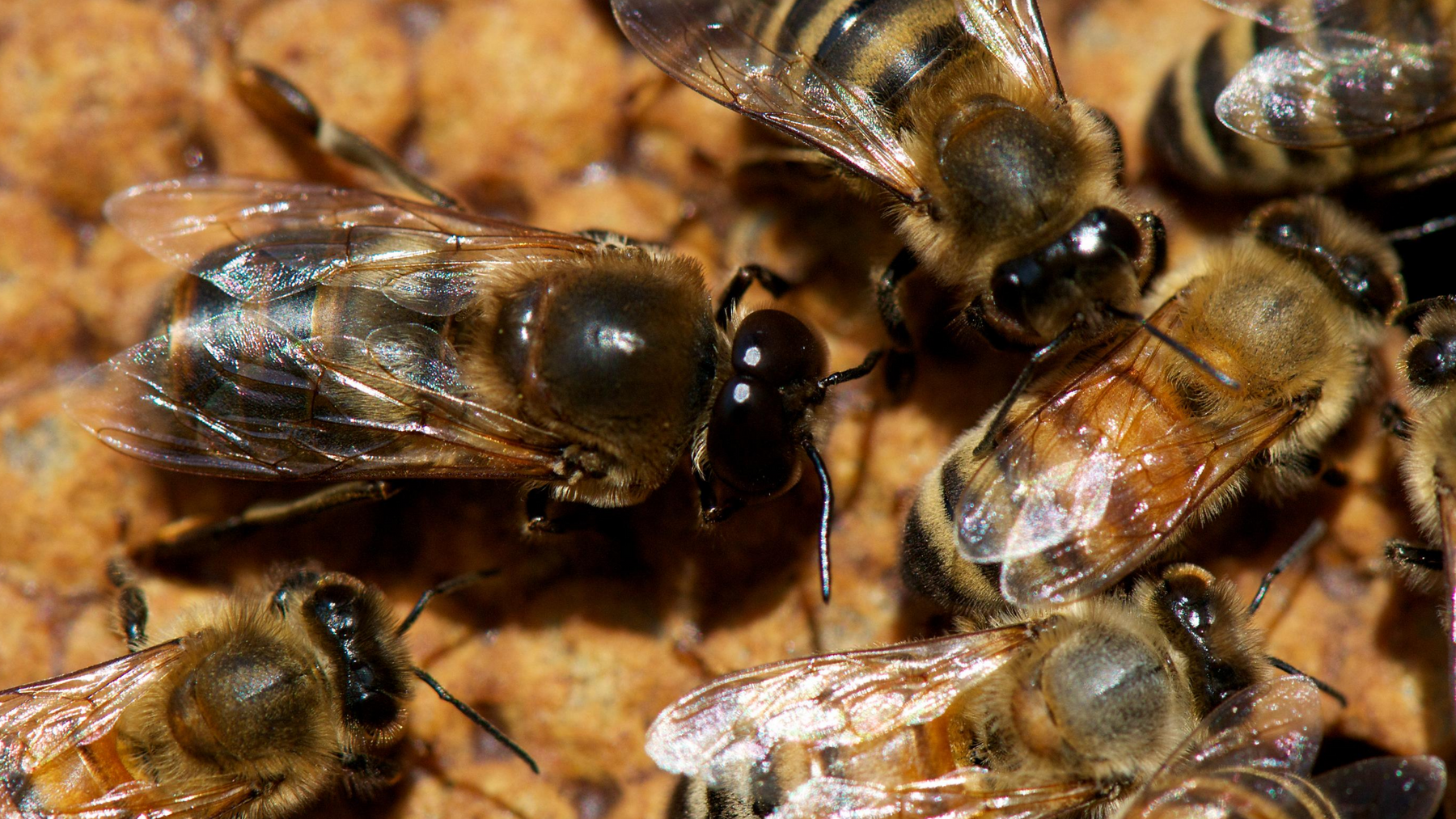
The Expendables: The Life of a Drone Honey Bee
The Life of an Expendable
When inspecting your hive, drones are easy to spot. Their eyes are twice the size of the worker bees and cover the entire top of their head. Their bodies are noticeably bigger and thicker than the female worker bees; and because they have no stingers, they have fuzzy rounded abdomens.
Although drones are the only male bee in a colony, their numbers are quite small. A colony generally contains between ten and sixty thousand bees, sometimes more; however, each colony will typically only have a few hundred drones.
The drone’s lifespan is shorter as well. The average lifespan of a drone is 55 days, compared to the worker bee who lives six to seven weeks in the summer/spring and 4-6 months in the autumn/winter. The queen’s lifespan is considerably longer at three to six years.
A Short, Rough Life
A drone’s primary purpose in life is to mate with a queen, and if they get lucky ... it will kill them. Just as a worker bee loses its stinger and then dies when it is used, the male bee’s sex organ tears off along with much of its internal anatomy after a few seconds of mating. This is because the drone’s sex organ is barbed just like a worker bee’s stinger. Watch this video to see a queen (with the drone’s parts attached) that has just returned to the hive. This video shows the actual mating of honeybees.
Every day the drones fly to a drone congregation area that is some distance from the hive. Here, they wait for the sighting of a queen. The drones use their large eyes to spot a queen on their nuptial mating flight. Bees mate midair, 200 to 300 feet up from the ground.
A Simple Purpose
Drones serve no other function in the hive. They don’t have a stinger so they can’t work to defend the hive. They also don’t have a honey stomach or pollen baskets that would enable them to go out and forage. They don’t work to help produce the honey. Their sole purpose is to mate with a virgin queen when she makes her mating flight.
Although the drones don’t help with the day-to-day activities of the colony, the worker bees care for the needs of the drones because they serve this vital function in the colony and need to be available when a queen dies or is superseded. When the weather begins to cool off and mating season ends; however, their free lunch comes to an end as well. As the nectar-producing season comes to a close, worker bees begin to force the drones from the hive. Wanting to conserve their honey stores, the workers don’t want to keep feeding them with winter approaching. Beekeepers that experience cold winters use this as a signal that their beekeeping season is coming to an end.
No Respect for the Expendable
Drone brood are even considered expendable and are often reared at the outer edges of the brood nest. When temperatures drop and the cluster of bees contracts, the brood on the edges may become chilled and die. Drone brood cells are larger in diameter and longer than a worker bee’s brood cells. When capped, they will extend beyond the surface of the comb and look similar in appearance to the point of a bullet.
When laying an egg in the drone brood cell, the queen does not fertilize the egg. She knows it is a drone cell because she measures the diameter of the cell with her front legs. If the colony has a sufficient number of drones, she will pass it by for another time. A drone bee will emerge 24 days after egg-lay compared to 21 days for female worker bees. Varroa mites prefer drone brood because of this extended time inside the cell, giving them more time to reproduce.
General Questions About Life of a Drone Bee
How do beekeepers manage drone populations within their hives, especially with varroa mite control?
Beekeepers use drone comb traps to manage drone populations and control varroa mites. These traps contain cells specifically sized for drone brood. The queen lays drone eggs in these cells, and before the drone brood matures, beekeepers remove and freeze the frames, killing the mites and drone brood.
What determines the number of drones in a colony?
The number of drones in a colony is influenced by the season, the health and age of the queen, and the colony's overall health and population size. More drones are produced in the spring and summer, during colony expansion and queen mating periods.
How do drones develop the ability to recognize a queen during their mating flights?
Drones have large eyes adapted for spotting queens during nuptial flights. This ability is instinctual and genetically programmed, ensuring they can identify and mate with a queen mid-air.
What happens to a drone bee if it survives the mating season without mating?
If a drone survives the mating season without mating, worker bees expel it from the hive as resources become scarce in autumn and winter. Unable to feed themselves, the drones die, highlighting their expendable role in the colony.
Let us help you be your hive's champion! Shop for all of your beekeeping supplies right here!




Leave a comment